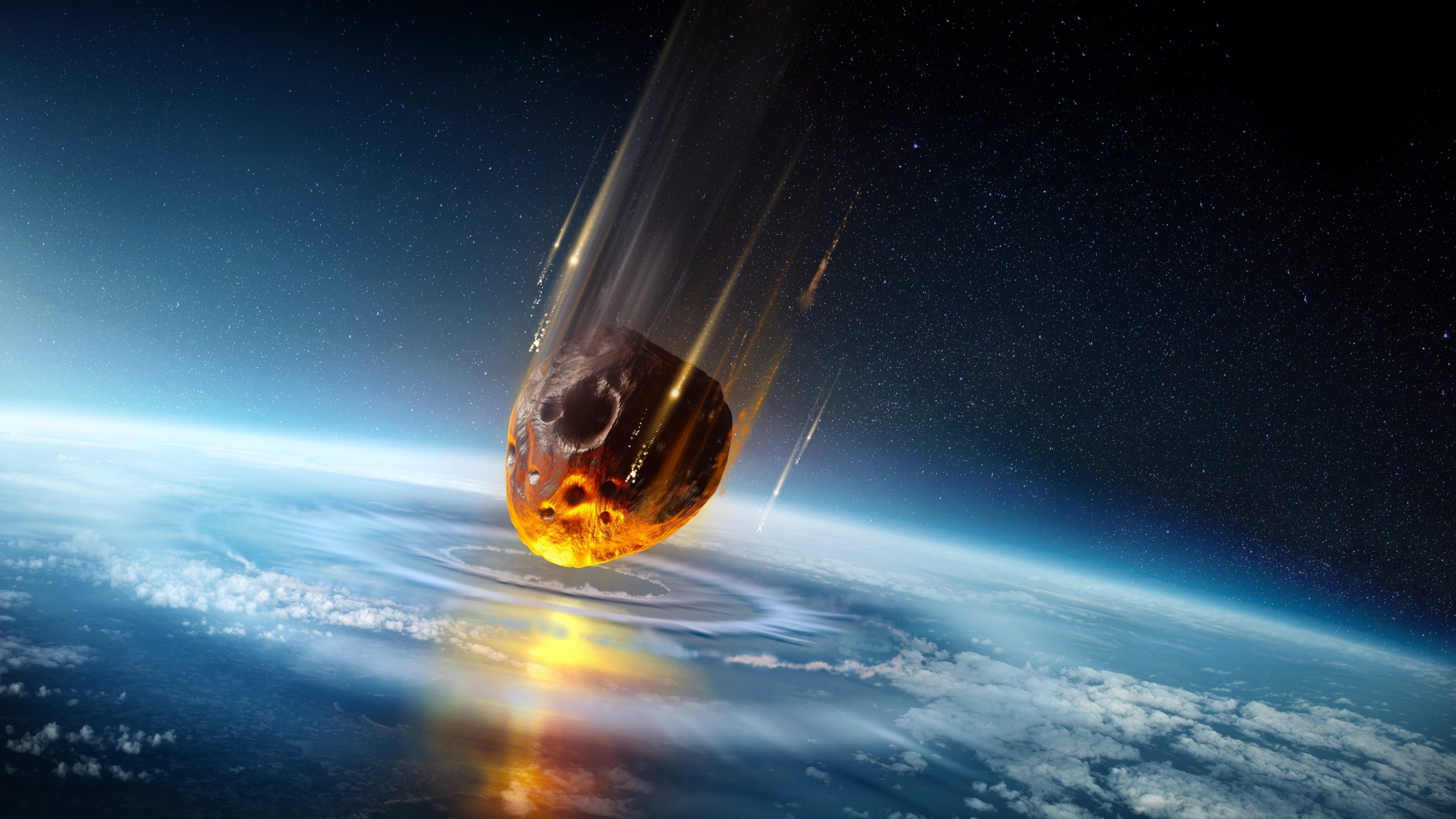Scientists look back in time to reconstruct explosions in Earth's atmosphere
Although they don't impact the surface directly, historical evidence and simulations suggest airbursts can pack a punch.

Space can be relentless. Even though things have quieted down over the last few billion years, Earth continues to get bombarded by all manner of cosmic objects — some large, some small, and others somewhere in between.
Cosmic dust steadily rains down onto Earth's atmosphere, while the odd kilometer-size asteroid meandering through space will find its way to Earth every few hundred million years or so. Other pieces of rock, much smaller than what we consider extinction-worthy objects, can also make their way towards our rocky, watery world. But instead of colliding with the planet's surface, these objects sometimes explode as they hit our atmosphere, sending shockwaves toward whatever lies beneath. We call these events airbursts.
Because airbursts happen in the atmosphere, however, studying them has proven to be a difficult task. A group of researchers has therefore been investigating "touchdown" airburst events, where the impactor explodes in the atmosphere with enough force for shockwaves and heat to reach the ground. These events, where impactors explode relatively close to the surface, are actually more common than large, crater-forming impacts, the researchers say.
"These impacts are not major crater-forming events," James Kennett, an Earth scientist and co-author of the research, said in a statement. The issue is just that, while meteorites leave behind large craters for scientists to study, airbursts happen in the atmosphere, and leave scant evidence in the geologic record.
Researchers wanted to model "low-altitude" touchdown airbursts to better understand what effects an impact of this kind could produce. Low altitude, in this case, was defined as about 766 yards (700 meters) or less above Earth's surface. The scientists compared their data against documented above-ground explosions, such as airbursts that occurred just kilometers above Tunguska in 1908, above Chelyabinsk in Russia in 2013, and they also looked at the Trinity nuclear test explosion of 1945 in New Mexico, which occurred roughly 100 feet (31 meters) above ground. The researchers ran multiple simulations of asteroids and comets of a wide range of sizes as well.
"We produced hydrocode computer models of a Type II or touch-down airburst, which is that in which the high temperatures, high pressures and high velocity intersect Earth's surface, producing meltglass, microspherules and shock metamorphism," Kennett explained.
These above-ground explosions were capable of generating temperatures that could melt minerals and metals with no crater needed, Kennett continued to explain. The models also showed researchers how pressures generated from the explosions could induce shock metamorphism, or "cracks," in the quartz.
Breaking space news, the latest updates on rocket launches, skywatching events and more!
The researchers are quick to point out that a number of factors can influence the behavior of airbusts, including a comet or asteroid's size, the distance above ground an explosion took place, the angle at which an object enters the atmosphere and the number of objects. Modeling, therefore, can be a tricky business.
The research compliments another recent paper in which researchers applied their model to an archaeological site called Tall el-Hamman — a bronze age city near the Dead Sea. The site had previously caught the researchers eye because a 5-foot (1.5-meter) interval of meltglass on pottery shards and shocked quartz indicated evidence of temperatures and pressures far beyond what people at the time could have created.
Modeling along with physical evidence at the site strongly suggested an airburst could have been responsible for demolishing the entire city. The Tall el-Hammam site has been speculated as being the biblical Sodom and Gomorrah, two cities in the book of Genesis that were destroyed by God for their debauchery.
"We argue…that a cosmic touchdown airburst is the only plausible explanation for the evidence at Tall el-Hammam," said Kennett.
A study about this research was published this year in the journal Airbursts and Cratering Impacts.

Conor Feehly is a New Zealand-based science writer. He has earned a master's in science communication from the University of Otago, Dunedin. His writing has appeared in Cosmos Magazine, Discover Magazine and ScienceAlert. His writing largely covers topics relating to neuroscience and psychology, although he also enjoys writing about a number of scientific subjects ranging from astrophysics to archaeology.
